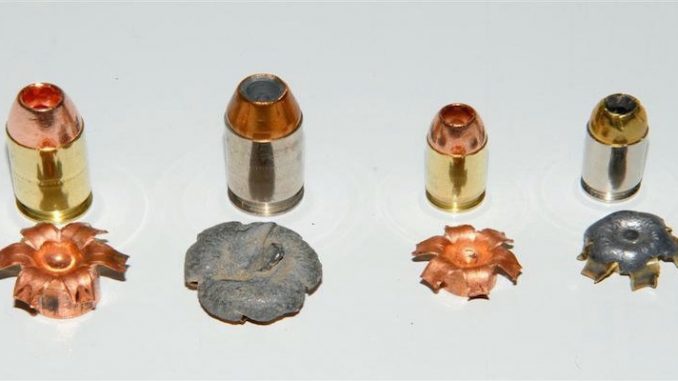
Many are very, very concerned that the United State’s army has announced that they are switching to hollow point bullets. The news exploded at the Modular Handgun System Industry Day held in Picatinny, New Jersey on July 7, 2015. The event was, in part, held to announce the replacement of not only the Beretta M9 handgun, but also the ammunition. As soon as the announcement was made, a military lawyer got on stage and tried to explain why this is such a “great idea”.
According to TTAG [1]:

BYPASS THE CENSORS
Sign up to get unfiltered news delivered straight to your inbox.
You can unsubscribe any time. By subscribing you agree to our Terms of Use
Latest Video
The U.S. did not agree to a ban on expanding ammo by international treaty. And the the Army’s prepared to defend the decision in the court of international law and opinion. His core argument: countries that will denounce the use of hollow-point use the hollow points for their police forces.
The Army said it will rely on FBI data to evaluate bids for the new ammunition. It also said that it knows it will get heat for the move, but claimed the administration supported the change at the highest levels at the Department of Defense. In other words, this is as close to a done deal as it can get without a signed contract.
The question is: what about rifle ammo? We’re looking into it. Watch this space.
Hollow point bullets are very lethal. According to Wikipedia [2]: “A hollow-point bullet is an expanding bullet that has a pit or hollowed out shape in its tip often intended to cause the bullet to expand upon entering a target in order to decrease penetration and disrupt more tissue as it travels through the target. It is also used for controlled penetration, where over-penetration could cause collateral damage (such as on an aircraft).
In target shooting, they are used for greater accuracy and reduction of smoke, fouling, and lead vapor exposure, as hollow point bullets have an enclosed base while traditional bullets have an exposed lead base. In self-defense, hollow points are designed to increase in diameter once within the target, thus maximizing tissue damage and blood loss or shock, and to remain inside the target, thereby transferring all of the kinetic energy to the target (whereas some fraction would remain in the bullet if it passed through instead).”
Sources:


